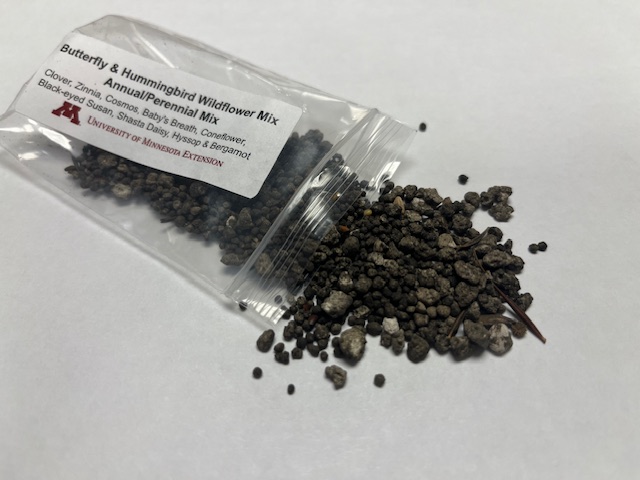Talking Plants
Jillian Patrie | University of Minnesota Yard and Garden Extension
Seed saving has been around for as long as humans have been cultivating plants. With more people gardening at home again, seed saving has become popular again. Whether you are saving tomato, pumpkin or marigold seeds they all have their unique way in which they are saved for future use. Let’s talk about some ways that you can successfully save seeds from your garden too.
Harvest seeds when the fruit is ripe, and the seeds are mature. The timing depends on the type of plant you are harvesting from. Bean and pea seeds are best harvested when the plant and seed is completely dried out. Let cucumbers turn yellow and then harvest seeds. Some plant seeds are covered in a slimy gel, like tomatoes. These seeds can be placed into a jar with water and shaken to separate the seed from the gel like substance surrounding it.
To store them successfully, place dried seeds in paper bags or envelopes and remember to label them. Avoid using plastic bags as they can trap moisture, and mold can grow, or the seed could start to germinate. Annual seeds can be collected and stored in a cool dry place and will be ready to plant when the weather allows next year!
If you have ever tried to germinate morning glory or sweet pea seeds you are familiar with seed conditioning methods that are required for germination to take place. Perennial seeds, such as native wildflowers usually need a separate processing method for successful germination. Many perennials require a series of events to occur during storage before they will germinate and grow. This is commonly done through a process called stratification, in which the seed is put through temperature and environment changes for a set amount of time that mimics the winter season. The amount and specific details of this process is determined by what kind of seeds are being stored. If you have purchased perennial seeds, the seed source will have instructions on how to stratify the seeds. If you have collected your own seeds, many native plant producers will have information on their websites about stratification methods. Many processes will entail a series of periods in warm and cold temperatures. The easiest way to germinate collected perennial seeds is to sow them outside before snowfall and let nature do its thing!
In addition to stratification, a seed preparation method called scarification is needed for certain seeds to germinate. Scarification is a method in which the seed coat (hard shell) is broken in some way, usually by nicking the seed coat with a pruner or with sandpaper. This allows water to enter and start the germination process. Morning glories and sweet peas benefit from this process as well as soaking to speed up germination. A few trees require this method too, such as Honey Locust and Kentucky Coffee trees. For more information on saving seeds visit
https://extension.umn.edu/yard-and-garden-news/save-seeds-next-years-garden.
For more information on this article or local assistance please contact your local Clay County Extension Educator Jill Patrie at 218-299-7338 or by email at patri350@umn.edu.


